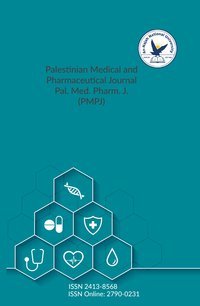Homology Modeling of Human Indoleamine-Pyrrole 2,3-Dioxygenase-2 (hIDO2) and Virtual Screening Approaches to Identify Novel, Potent, and Selective HIDO2 Inhibitors
Authors:
Article info
2022-02-01
2023-01-12
343 - 366
Keywords
- virtual screening
- homology modeling
- Human Indoleamine-Dioxygenase-2
- interaction patterns
- molecular dock-ing studies
Abstract
Indoleamine 2,3-dioxygenase 2 (IDO2) is a newly discovered target proposed to be a promising therapeutic modulator of various peripheral and central pathological states such as autoimmune disorders and immune escape diseases like cancer. The lack of potent hIDO2 inhibitors presents a high demand for discovering novel hIDO2 inhibition strategies to ex-plore its indeed pathological role. We aim to develop novel, selective, and potent hIDO2 in-hibitor candidates by building a new operative hIDO2 homology model and utilizing the computational structure/ligand-based methods. First, an IDO-focused library of hits besides a new library of candidates, which was self-designed based on the previously reported IDO2 inhibitors, was extracted and prepared, respectively, to be ready for the virtual screening pro-cedure. Next, 14 potentially competent models were built, and the most promising models were selected for molecular docking simulations to search a group of potential candidates through their docking scores, ligand binding energies, and ligand-interaction patterns. Among the potential candidates, Model 4 was the most competent model for high-throughput screen-ing. The molecular docking results suggest that nine novel ligands might be promising candi-dates for the hIDO2 target. These candidates revealed ideal geometry and interaction patterns within the hIDO2 binding site compared to the reference compounds. Moreover, the candi-dates showed favorable ligand binding energies and exhibited druggability properties. These compounds could inspire further studies to discover advanced lead compounds for hIDO2 inhibition. Developing novel hIDO2 inhibitors to intervene in the pathological states that trig-ger autoimmune diseases or equally serious outcomes such as cancer could be significantly beneficial.
Homology Modeling of Human Indoleamine-Pyrrole 2,3-Dioxygenase-2 (hIDO2) and Virtual Screening Approaches to Identify Novel, Potent, and Selective HIDO2 Inhibitors
المؤلفون:
معلومات المقال
2022-02-01
2023-01-12
343 - 366
الكلمات الإفتتاحية
- virtual screening
- homology modeling
- Human Indoleamine-Dioxygenase-2
- interaction patterns
- molecular dock-ing studies
الملخص
Indoleamine 2,3-dioxygenase 2 (IDO2) is a newly discovered target proposed to be a promising therapeutic modulator of various peripheral and central pathological states such as autoimmune disorders and immune escape diseases like cancer. The lack of potent hIDO2 inhibitors presents a high demand for discovering novel hIDO2 inhibition strategies to ex-plore its indeed pathological role. We aim to develop novel, selective, and potent hIDO2 in-hibitor candidates by building a new operative hIDO2 homology model and utilizing the computational structure/ligand-based methods. First, an IDO-focused library of hits besides a new library of candidates, which was self-designed based on the previously reported IDO2 inhibitors, was extracted and prepared, respectively, to be ready for the virtual screening pro-cedure. Next, 14 potentially competent models were built, and the most promising models were selected for molecular docking simulations to search a group of potential candidates through their docking scores, ligand binding energies, and ligand-interaction patterns. Among the potential candidates, Model 4 was the most competent model for high-throughput screen-ing. The molecular docking results suggest that nine novel ligands might be promising candi-dates for the hIDO2 target. These candidates revealed ideal geometry and interaction patterns within the hIDO2 binding site compared to the reference compounds. Moreover, the candi-dates showed favorable ligand binding energies and exhibited druggability properties. These compounds could inspire further studies to discover advanced lead compounds for hIDO2 inhibition. Developing novel hIDO2 inhibitors to intervene in the pathological states that trig-ger autoimmune diseases or equally serious outcomes such as cancer could be significantly beneficial.
An-Najah National University
Nablus, Palestine
Nablus, Palestine
- P.O. Box
- 7, 707
- Fax
- (970)(9)2345982
- Tel.
- (970)(9)2345560
- (970)(9)2345113/5/6/7-Ext. 2628
- [email protected]
- EIC
- Prof. Ismail Warad
